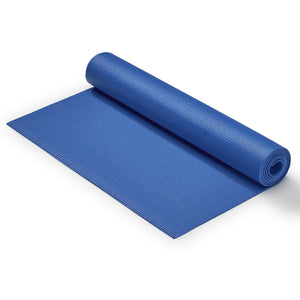Your body speaks a language more ancient than words. With every breath, stretch, and step, it communicates—if only we would listen. Somatic movement invites us into this forgotten conversation, transforming ordinary physical activity into a profound dialogue between consciousness and form.
Don’t worry about this mind-body practice being just another wellness trend— somatic movement practices began to emerge in the late 19th and early 20th centuries.
In our culture of perpetual distraction and digital immersion, somatic movement offers a radical invitation to return home to our bodies.
What is Somatic Movement?
Somatic movement refers to physical movements that are performed with an internal focus on bodily sensations and awareness. Somatic practices invite us to explore the rich landscape of internal sensations and awareness. It emphasizes the connection between the mind and body, encouraging a person to consciously experience and explore how their body feels from within.
This approach stands in stark contrast to our culture's mechanical relationship with physical activity—where bodies are often treated as machines to be optimized rather than living systems to be experienced. Conventional exercise focuses primarily on external form, repetitions, or aesthetics, while somatic movement cares very little for that. Somatic practices often aim to release tension, improve posture, enhance mobility, and promote overall well-being.
When we move somatically, we're essentially becoming researchers of our own experience. Each movement becomes an opportunity to discover how we're organized internally, how we hold tension, and how we can release it.
A Brief History of Somatic Movement
The roots of somatic movement trace back to the early 20th century when several pioneers began to explore the mind-body connection in greater depth. The term "somatics" was coined by Thomas Hanna in the 1970s. Somatics is a field of study that focuses on the body's internal sensations, perceptions, and experiences. The term originates from the Greek word soma, which means "living body".
The somatic movement field encompasses diverse methodologies, each offering unique pathways to embodied awareness. This includes the following:
- The Feldenkrais Method: Developed by physicist and judo master Moshe Feldenkrais, uses gentle, exploratory movements to rewire neural pathways and release inefficient movement patterns. These subtle "movement inquiries" help practitioners discover new possibilities for ease and efficiency.[1]
- The Alexander Technique: Pioneered by F. Matthias Alexander in the early 20th century, focuses on conscious inhibition of habitual responses and retraining postural alignment. Popular among performers, this method teaches how to move with natural ease by undoing years of accumulated tension patterns.[1]
- Somatic Yoga: Transcends traditional physical asana practice by emphasizing internal sensation over external form. Rather than forcing the body into idealized shapes, practitioners learn to sense and respond to their body's unique needs and signals.
- Continuum Movement: Developed by Emilie Conrad, this approach uses breath, sound, and fluid movement to explore the body's natural rhythms and promote healing. It encourages a deep listening to the body's internal landscapes and enhances sensory awareness.[2]
- Authentic Movement: Rooted in Jungian psychology, Authentic Movement is a practice where a "mover" follows spontaneous bodily impulses while being witnessed by a "seer." This process fosters self-discovery, emotional expression, and a profound connection to unconscious material.[3]
While these figures were instrumental in formalizing somatic practices, many ancient traditions like yoga, Tai Chi, and martial arts have long embraced the concept of internal awareness and the holistic connection between the body and mind.
Transforming Fitness into Somatic Awareness
Almost any movement discipline can be approached somatically by shifting focus from external execution to internal experience. We can see this applied in various workout modalities:
- Dance: Beyond choreography and technique, somatic dancers attune to the subtle impulses that initiate movement, the weight shifts that create momentum, and the emotional resonance of each gesture.
- Yoga: Somatic yoga practitioners move at a pace that allows deep listening. Each asana (pose) becomes an inquiry rather than an achievement, with breath serving as the essential bridge between consciousness and form.
- Pilates: Joseph Pilates himself emphasized the mind-body connection with his concept of "contrology." A somatic approach honors this original intention by cultivating precise awareness of core engagement, spinal articulation, and breath coordination.[4]
- Everyday Movement: Even mundane activities like walking, sitting, and reaching can become transformative when approached with somatic awareness. Notice how your weight transfers through your feet while walking, how your bones connect with your chair while sitting, or how your shoulder organizes itself as you reach for a glass.
- Aikido: This martial art already emphasizes fluidity and energy flow. You can deepen the somatic experience by paying attention to the sensation of movement and the dynamic relationship with your partner.[5]
- Tai Chi: This ancient practice is inherently somatic, but you can enhance it by focusing more on the internal sensation of energy (Qi) moving through your body with each slow, deliberate motion.
The Science-Backed Benefits of Moving From Within
Research increasingly validates what somatic practitioners have long experienced—that cultivating internal awareness yields profound physiological and psychological benefits. These include:
- Stress Reduction: Studies published in the Journal of Bodywork and Movement Therapies show that somatic awareness activates the parasympathetic nervous system, reducing cortisol levels and promoting the body's natural relaxation response.[6]
- Enhanced Proprioception: Somatic practices refine our internal body map and spatial awareness, potentially reducing injury risk and improving athletic performance at any level.[7]
- Pain Relief: Many chronic pain patterns stem from unconscious movement habits. Somatic practices can retrain the body, release tension, and alleviate discomfort.[8]
- Improved Posture and Mobility: Mindful movement helps identify and correct imbalances, leading to better alignment and greater freedom of movement. Other physical benefits, for example, include flexibility, balance, muscle tone, reduction of days in pain, and increased mobility.[8]
Embarking on Your Somatic Journey
Ready to explore the somatic landscape? Here are a few thoughtful entry points:
- Start with curiosity rather than ambition. Unlike conventional fitness, somatic practice values quality of attention over quantity of effort.
-
Move at "sensation speed." Slow down enough to notice the subtle details of your experience—this is where the most profound learning occurs.
- Embrace the beginner's mind. Even if you're physically advanced, approach somatic exploration with fresh eyes and an open heart.
- Find skilled guidance. While many somatic principles can be self-explored, working with a certified practitioner can accelerate learning and ensure safe exploration.
- Practice patience and trust. Somatic change often happens subtly, through layers of awareness rather than dramatic breakthroughs.
In a world that often values doing over being, these practices remind us that our deepest intelligence emerges not from pushing harder, but from listening more deeply. Start with a daily recommendation of 5 to 15 minutes per day of somatic exercise. For some examples, download the SunnyFit app and follow along with the meditation videos.
Whether you're seeking relief from physical discomfort, emotional balance, or simply a more intimate relationship with your body's wisdom, somatic movement offers a sustainable path to embodied well-being.
REFERENCES
1. Alexander technique and Feldenkrais method: a critical overview. Jain, Sanjiv et al. Physical Medicine and Rehabilitation Clinics, Volume 15, Issue 4, 811 - 825.
2. Continuum Movement. (n.d.). Continuum: An overview. Retrieved March 1, 2025, from https://continuummovement.com/continuum-an-overview/.
3. Authentic Movement Institute. (n.d.). Authentic Movement. Retrieved March 1, 2025, from https://www.authenticmovementinstitute.com/authenticmovement.
4. The Reformery New York. (n.d.). The evolution of Pilates. Retrieved March 1, 2025, from https://www.thereformerynewyork.com/blog/evolution-of-pilates.
5. Aikido Institute. (n.d.). About Aikido. Retrieved March 1, 2025, from https://www.aikidoinstitute.org/about-aikido.html.
6. Sandlund, E.S., Norlander, T. The Effects of Tai Chi Chuan Relaxation and Exercise on Stress Responses and Well-Being: An Overview of Research. International Journal of Stress Management 7, 139–149 (2000). https://doi.org/10.1023/A:1009536319034.
7. Smyth, C. (2012). The contribution of Feldenkrais Method to mind-body medicine [Doctoral dissertation, Saybrook University]. ProQuest Dissertations Publishing. (Publication No. 1536829).
8. Meehan, E., & Carter, B. (2021). Moving With Pain: What Principles From Somatic Practices Can Offer to People Living With Chronic Pain. Frontiers in psychology, 11, 620381. https://doi.org/10.3389/fpsyg.2020.620381.



























Add Your Name & Email
Please enter your name and email to continue.We won’t display your email publicly.